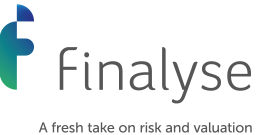Related Articles
How Finalyse can help
Stress Testing
Global banking regulators including the European Regulators (EBA) oblige banking institutions to take part in a multitude of different regulatory stress tests. Rules are becoming more stringent with regular upgrades to the minimum requirements. This places an additional burden on our customers and affects their ability to track and adapt to the changes.
Stress testing is a critical tool for banks and financial institutions, enabling them to assess their ability to withstand economic shocks and maintain operational integrity. Finalyse’ s state-of-the-art stress testing solutions are designed to help our clients navigate their tail risk and hidden vulnerabilities with ease and precision.
How does Finalyse address your challenges?
Analysis of the stress testing regulatory requirements, designing scenarios, and assessing their applicability and regulatory compliance.
Translating the scenarios into quantitative impacts and conducting their assessment to gauge the performance of the existing models and identifying gaps in current processes.
Assessment of portfolio dynamics and portfolio weaknesses to extreme but plausible events as well as identification of hidden correlations present in the portfolio.
Supporting the Internal Capital Adequacy Assessment Process (ICAAP) reporting.
Ensuring sound governance processes and control mechanisms related to stress testing, as well as validating the entire stress testing framework.
Enhancing decision-making within the ICAAP framework by developing robust policies.
How does it work in practice?
Our team of experts can work independently or collaboratively with your team to develop innovative approaches to regulatory stress testing or validate your current frameworks, ensuring they remain up to date. With extensive experience in this area, we also offer support for non-regulatory stress tests, customizing our approach to align with your specific needs and global best practices. The stress testing scenario outputs are then analysed and interpreted to assess their impact on the Internal Capital Adequacy Assessment Process (ICAAP) and other items of interest to the client.
Key Features
- We ensure compliance with regulations and benchmarking against several jurisdictions across Europe, Middle East and North America.
- We cover all relevant risk types by specialised experts (e.g., credit risk, operational risk, market risk, concentration risk, etc.)
- We review the current methodology and models and bridge the gap with global best practices tailored to the need of the institution.
- We develop comprehensive stress testing policy, including allocating risk appetite limits, risk appetite statements, and mitigation strategies, along with decision support processes
- We link the stress testing results to ICAAP reporting and implement a well-documented, comprehensive stress testing process.

Alexandre Synadino is a managing consultant with expertise in risk data analytics, climate risk management and regulatory reporting. He is an active member of the Finalyse Climate Risk Centre. His main area of expertise lies in the research, design and development of physical risk assessments using different tools and methods. Alexandre is involved in the conceptualisation of measurement approaches to cover multiple hazard types, geographies and scenarios to respond to regulatory demands for granular and forward-looking analyses.
Finalyse InsuranceFinalyse offers specialized consulting for insurance and pension sectors, focusing on risk management, actuarial modeling, and regulatory compliance. Their services include Solvency II support, IFRS 17 implementation, and climate risk assessments, ensuring robust frameworks and regulatory alignment for institutions. |

Our Insurance Services
Check out Finalyse Insurance services list that could help your business.
Our Insurance Leaders
Get to know the people behind our services, feel free to ask them any questions.
Client Cases
Read Finalyse client cases regarding our insurance service offer.
Insurance blog articles
Read Finalyse blog articles regarding our insurance service offer.
Trending Services
BMA Regulations
Designed to meet regulatory and strategic requirements of the Actuarial and Risk department
Solvency II
Designed to meet regulatory and strategic requirements of the Actuarial and Risk department.
Outsourced Function Services
Designed to provide cost-efficient and independent assurance to insurance and reinsurance undertakings
Finalyse BankingFinalyse leverages 35+ years of banking expertise to guide you through regulatory challenges with tailored risk solutions. |

Trending Services
AI Fairness Assessment
Designed to help your Risk Management (Validation/AI Team) department in complying with EU AI Act regulatory requirements
CRR3 Validation Toolkit
A tool for banks to validate the implementation of RWA calculations and be better prepared for CRR3 in 2025
FRTB
In 2025, FRTB will become the European norm for Pillar I market risk. Enhanced reporting requirements will also kick in at the start of the year. Are you on track?
Finalyse ValuationValuing complex products is both costly and demanding, requiring quality data, advanced models, and expert support. Finalyse Valuation Services are tailored to client needs, ensuring transparency and ongoing collaboration. Our experts analyse and reconcile counterparty prices to explain and document any differences. |

Trending Services
Independent valuation of OTC and structured products
Helping clients to reconcile price disputes
Value at Risk (VaR) Calculation Service
Save time reviewing the reports instead of producing them yourself
EMIR and SFTR Reporting Services
Helping institutions to cope with reporting-related requirements
Finalyse PublicationsDiscover Finalyse writings, written for you by our experienced consultants, read whitepapers, our RegBrief and blog articles to stay ahead of the trends in the Banking, Insurance and Managed Services world |

Blog
Finalyse’s take on risk-mitigation techniques and the regulatory requirements that they address
Regulatory Brief
A regularly updated catalogue of key financial policy changes, focusing on risk management, reporting, governance, accounting, and trading
Materials
Read Finalyse whitepapers and research materials on trending subjects
Latest Blog Articles
Contents of a Recovery Plan: What European Insurers Can Learn From the Irish Experience (Part 2 of 2)
Contents of a Recovery Plan: What European Insurers Can Learn From the Irish Experience (Part 1 of 2)
Rethinking 'Risk-Free': Managing the Hidden Risks in Long- and Short-Term Insurance Liabilities
About FinalyseOur aim is to support our clients incorporating changes and innovations in valuation, risk and compliance. We share the ambition to contribute to a sustainable and resilient financial system. Facing these extraordinary challenges is what drives us every day. |

Finalyse CareersUnlock your potential with Finalyse: as risk management pioneers with over 35 years of experience, we provide advisory services and empower clients in making informed decisions. Our mission is to support them in adapting to changes and innovations, contributing to a sustainable and resilient financial system. |

Our Team
Get to know our diverse and multicultural teams, committed to bring new ideas
Why Finalyse
We combine growing fintech expertise, ownership, and a passion for tailored solutions to make a real impact
Career Path
Discover our three business lines and the expert teams delivering smart, reliable support


